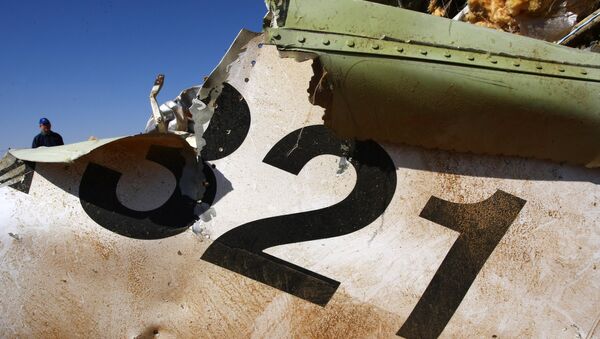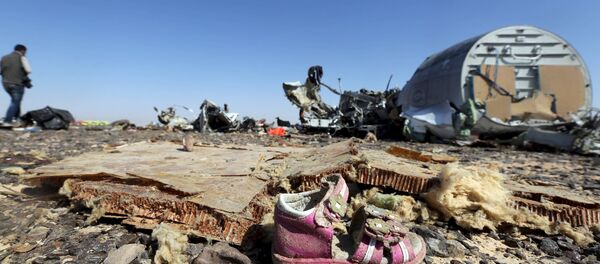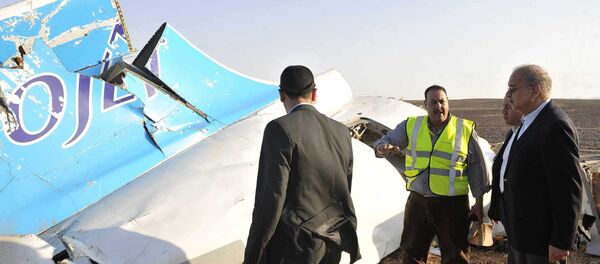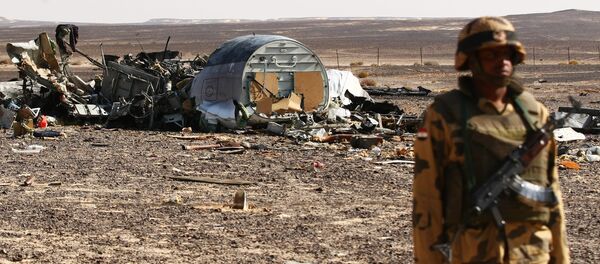The tragedy has already been named the biggest civil aviation disaster in Russian and Soviet history.
After the tail part of the Airbus A321 plane had sustained damages in 2001, the airliner was fully repaired. The technical condition of the plane was normal, Kogalymavia officials said.
Kogalymavia deputy director Andrei Averyanov said that A321 repairs had been completed in November 2001 in accordance with international regulations.
External forces are the only possible reason of the deadly crash, Kogalymavia officials said Monday. Kogalymavia 7K9268 flight likely suffered substantial damages when it started to fall, officials said.
"Before the A321 began falling, it most likely had received considerable damage to its construction that would not allow it to fly. Obviously, due to this, when the catastrophic situation started to unfold, the crew completely lost control over the plane, which would explain why there were no attempts to communicate and report on the emergency situation on board," the airlines’ deputy general director of technical and production issues, Andrei Averianov, said at a press conference in Moscow.
"A plane cannot break up in the air due to some sort of [system] failure. If we exclude any type of fantastic version, then theoretically a plane may break up because of large overloads. The Airbus 320 aircraft is a very reliable plane and has so-called protection in its control, which does not allow for the plane to become overloaded even if there is an error in piloting techniques," Alexander Smirnov, who is in charge of the company’s flight and production aspects, said.
He said that "the only feasible explanation to the reason for the plane breaking up in mid-air would be a particular action, a mechanical or physical action on the aircraft. I’m not authorized to make any sort of conclusions, but a plane cannot simply disintegrate."
The Kogalymavia plane's crew completely lost control over the aircraft as the disaster started to unfold. The Airbus A321 had been in uncontrolled flight as the catastrophe unfolded. However, Kogalymavia excluded human or technical factors as the cause for the deadly crash in Egypt, officials said.
Andrei Averianov said that according to Flight Radar information, he noted that "the plane slowed more than 300 kilometers an hour in less than a minute and simultaneously lost 1.5 kilometers in altitude."
"A plane cannot fly in this regime, especially a large passenger or cargo aircraft. This means that the plane was in an uncontrollable flight and wasn’t flying, but falling," Andrianov said.
"In regard to fatigued cracks it should be noted that work on its assessment of metal fatigue on airliners is done every five years. We also conducted such work very carefully on this plane and that was in March 2014," Kogalymavia flight director Alexander Smirnov said during a press conference in Moscow.
The Russian airline does not exclude a terrorist attack or an explosion as reasons behind the 7K9268 flight's deadly crash, the Kogalymavia deputy director said answering a question regarding the possibility of terrorists downing the A321.
"Let's wait for the official results of the investigation and for the commission to tell us about its result. I don't want to speculate [with regard to the cause for the plane crash], it's not in my competence," Alexander Smirnov said.
Kogalymavia halted flights over the Sinai Peninsula, said Oksana Golovina, the representative from TH&C Holding, which owns the airlines. There are no doubts that the investigation into the Russian plane crash is objective, officials said.
The company added that videos shared online, which allegedly showed the Russian airliner's crash in Egypt, were likely fake.





